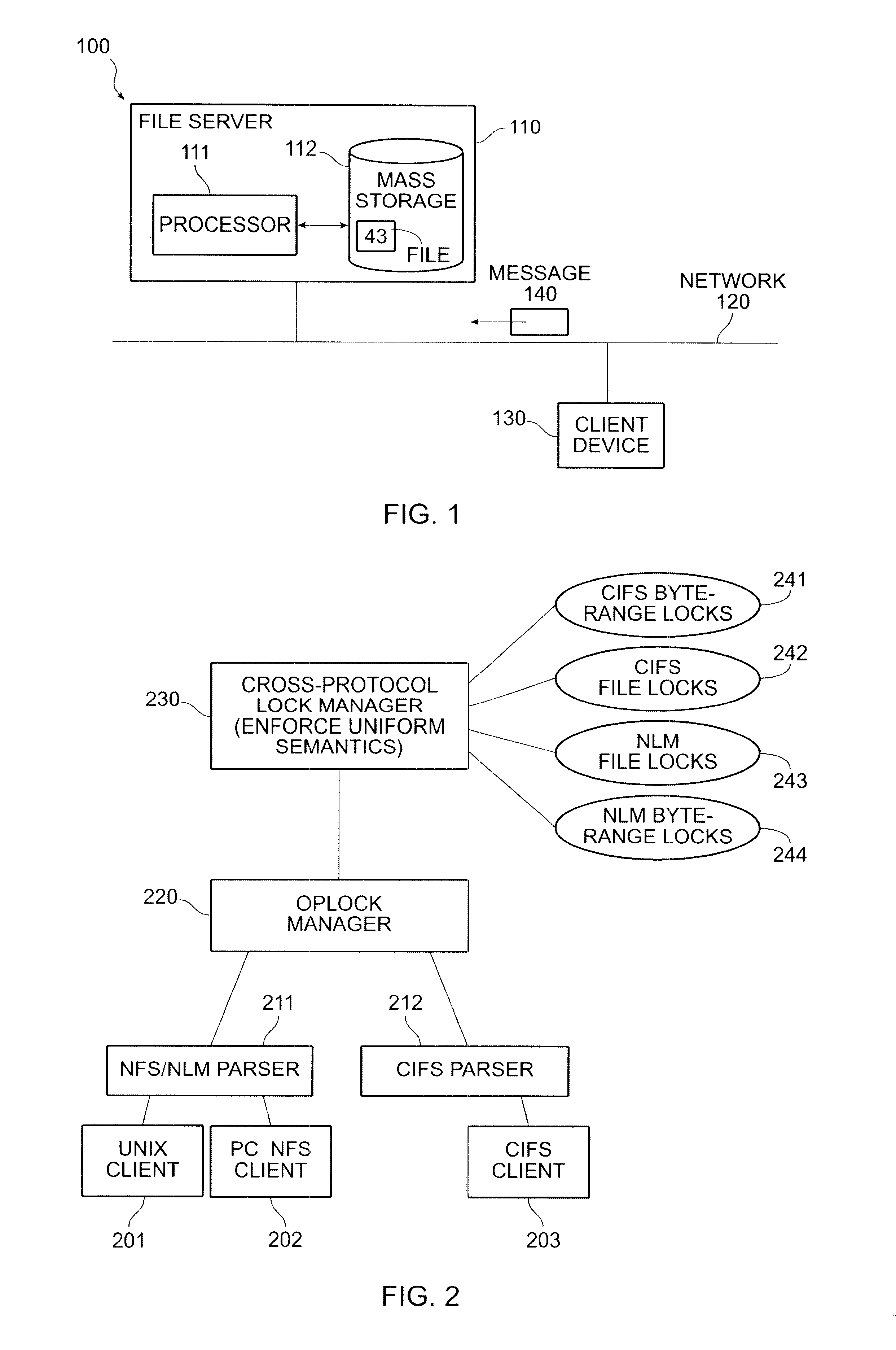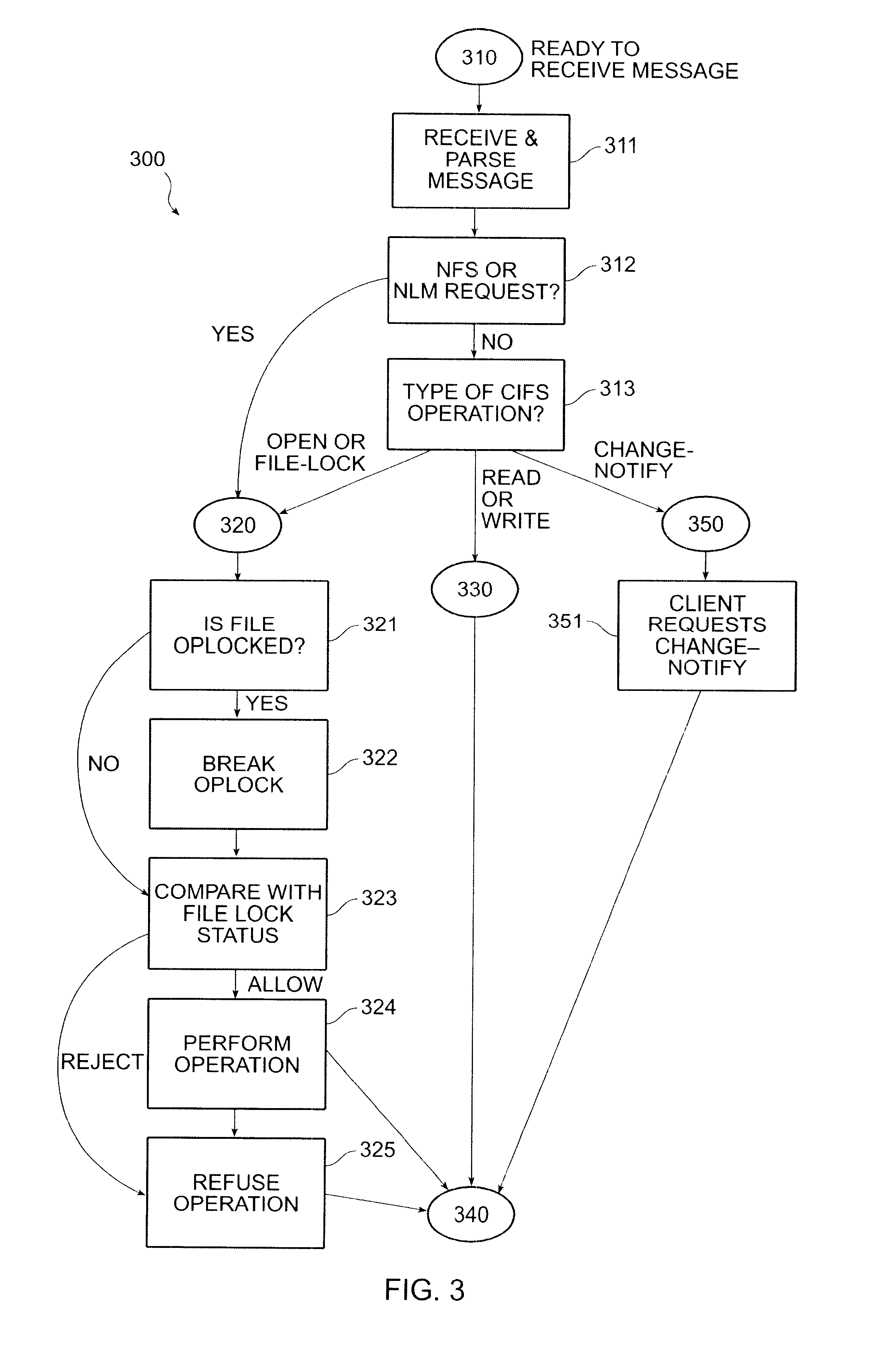Enforcing uniform file-locking for diverse file-locking protocols
a file server and multi-protocol technology, applied in the field of multi-protocol file server locking, can solve the problems of not providing file locking semantics, application failure at the first client device, and many file server protocols with differing and incompatible semantics for file locking and file sharing, etc., to achieve the effect of closing the fil
- Summary
- Abstract
- Description
- Claims
- Application Information
AI Technical Summary
Benefits of technology
Problems solved by technology
Method used
Image
Examples
Embodiment Construction
Although preferred embodiments are disclosed herein, many variations are possible which remain within the concept, scope, and spirit of the invention, and these variations would become clear to those skilled in the art after perusal of this application.
TECHNICAL APPENDIX
Other and further information about the invention is included in a technical appendix enclosed with this application. This technical appendix includes 30 pages (including drawings) and is hereby incorporated by reference as if fully set forth herein.
PUM
 Login to View More
Login to View More Abstract
Description
Claims
Application Information
 Login to View More
Login to View More - R&D
- Intellectual Property
- Life Sciences
- Materials
- Tech Scout
- Unparalleled Data Quality
- Higher Quality Content
- 60% Fewer Hallucinations
Browse by: Latest US Patents, China's latest patents, Technical Efficacy Thesaurus, Application Domain, Technology Topic, Popular Technical Reports.
© 2025 PatSnap. All rights reserved.Legal|Privacy policy|Modern Slavery Act Transparency Statement|Sitemap|About US| Contact US: help@patsnap.com



